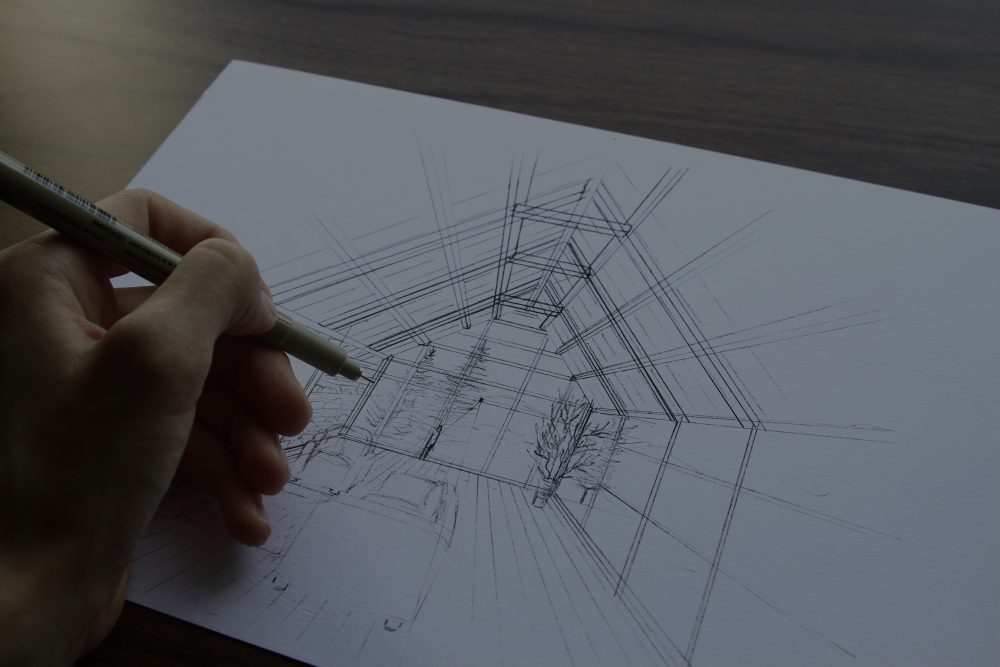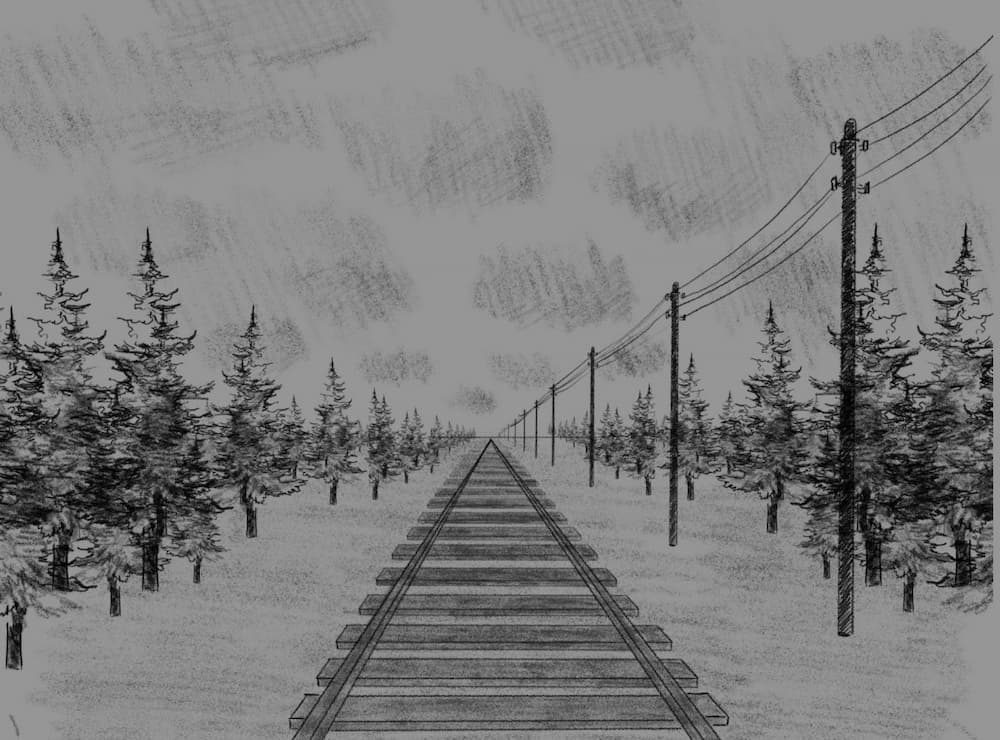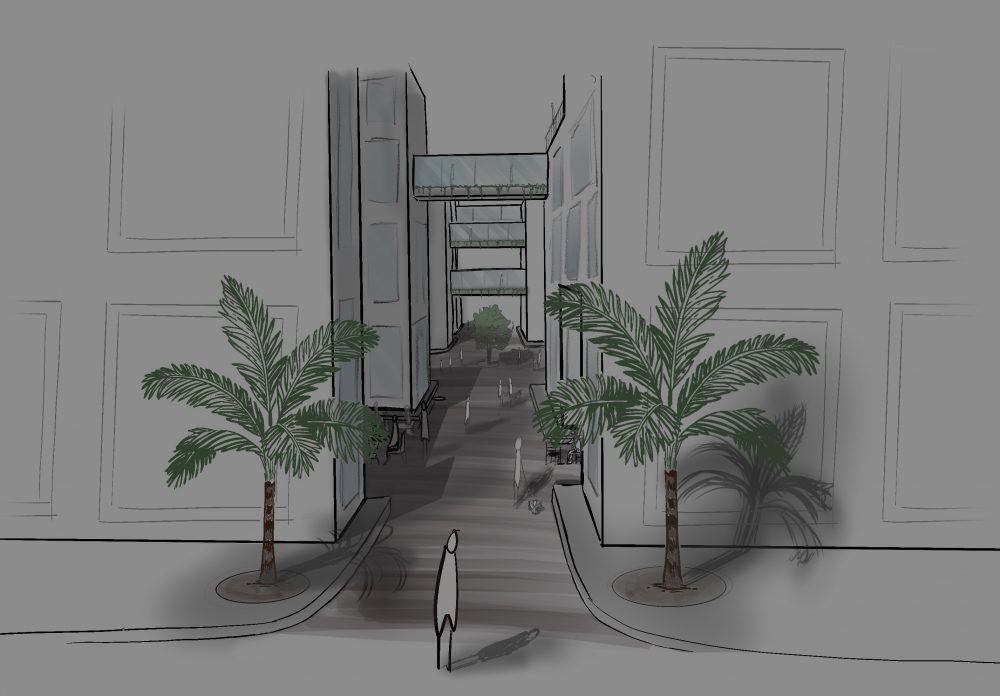Perspective in drawings is a useful skill to learn if you want to understand how to create realistic space in a drawing.
Clearly, this is one of the most important part of a drawing, painting. Indeed, It allows you to give depth (3D effect) of a space and it actually capture the way we see the world. Once you know these rules, anything you draw become immediately more real! This is not really complicated, however you will need a lot of practice (as for everything). Let’s start!
- Why perspective drawing ?
- Different Types of Perspective Drawing
- One Point Perspective
- One Point Perspective Drawing Proces
- Two Point Perspective
- Two Point Perspective Drawing Process
- Three Point Perspective
- Three Point Perspective Drawing Process
- Other Perspective Drawing Types
- Other Perspective Drawing Types Process


Why Perspective in Drawings ?
Perspective is the key to almost any drawing or sketch as well as paintings. As a matter of fact, it is one of the most important thing that you need to understand in order to create realistic and believable scenes.
Let me try and explain perspective with the image above. Imagine yourself standing in the middle of this corridor. Clearly, you can see that as lines head into the distance, they converge on a vanishing point (the red dot). In other words, the lines of the doors and windows (and even the details of the floor and ceiling) are all heading to the same point. Nevertheless, You can use imaginary lines (or grid) in order to help you for placing the objects according to the converging lines and to the vanishing point.
Even if, the rules are essentially the same, there are one-point, two-point, three-point and multiple-point perspective.
Some vocabulary to get familiar with:
– The horizon line represents the horizon, but also the viewer’s eye level. Moreover, anything above the HL is also above the viewer’s eye level, and anything below the HL is below the viewer’s eye level.
– The vanishing point is a point on the horizon line where any set of lines that is going the same direction as the viewer is looking will meet (they are called orthogonal lines).
– The converging lines : lines that are parallel to each other appear to converge to the same vanishing point in the distance.

Different Types Of Perspective in Drawings
As said earlier, there are several types of perspective, so which one should you use and when?
Let’s have an overview of the different perspective types, when to use them and see examples for each of them.
Let’s dive into it!

One Point Perspective
In One-Point Perspective, we have only one vanishing point on the horizon line and all the orthogonal lines converge towards it.
We use it in order to take the attention of the viewer to one of the face of an object, or when the object looks directly at you. Additionally, the most common example of one point perspective is a view of a street with buildings, a long corridor or a railroad.
You can find the detailed lesson in our one point perspective drawing post.

One Point Perspective Drawing Process
This kind of corridor drawing is the most basic example of one point perspective and the easiest!
In short, after placing your horizon line and your vanishing point, draw the circular windows and ceiling using the converging lines. See how the farthest are the object the smallest they look! (the lamps for instance).
Even if it may seem complicated, if you start with easier examples as box and cylinders, you will understand the logic behind it. Additionally, you can find other examples in our one point perspective post.


Two Point Perspective In Drawings
Two Point Perspective has two vanishing points on the horizon line. In fact, we use it when looking at an object from its corner. Common examples of such perspectives depict an object, a corner of a building, a street corner etc.
Additionally, anything you draw under the horizon line is under your eye-level, and anything you draw above the horizon line is above your eye-level.
Furthermore, you can find the detailed lesson in our two point perspective drawing post and other more complicated examples in our step-by-step perspective drawing post.

Two Point Perspective Drawing Process
A drawing of an interior is obviously a good way to learn two point perspective. Again, after placing your horizon line and vanishing points, trace the walls to define the outlook. Then, add the furnitures using boxes and cylinders. Draw as much as details you want. Eventually, the more details you add, the more complex and realistic your drawing will be.


Vertical Two Point Perspective In Drawings
As can be seen, this kind of perspective drawing is still considered as two point perspective. However, the only difference is that the horizon line here is vertical (in fact, the horizon line in perspective doesn’t always represent the real physical horizon). But don’t worry, the rules still remain the same!
Find more vertical two-point perspective in our step-by-step examples post.

Vertical Two Point Perspective Drawing Process
As seen in this drawing, the two vanishing points are up and down, instead or left and right. In other words, we are facing the horizontal corner of the building.
Remember that placing the main lines is the hardest part! It is ok to spent a lot of time for this! However, just draw these lines softly so you can erase them and try again if needed!


Three Point Perspective In Drawings
Three-point perspective uses three vanishing points where two of them are on the horizon line and the third is either high above the horizon line or way below it. Undoubtedly, I love to use this one when I want to draw a bird view of a building!
In three-point perspective, if the third vanishing point is located under the horizon line, the viewer is looking down. If it is located above the horizon line, the viewer is looking up. None of the lines in the drawing are perpendicular to the viewer. All the lines are drawn in the direction of a certain vanishing point.

Three Point Perspective Drawing Process
This is a bird’s view of a big building. The same rules apply here, the only difference is that you have three vanishing points. Obviously, you can’t see them on my canvas (as if you put the vanishing points too close to each other, it doesn’t really give the realistic view we would like to have).



Other Perspective Drawing Types
There are also multi-point perspective. It is the case when there are more than two primary vanishing points on the horizon line. (Ultimately, this is the most common type of perspective we can observe in the real world).
Generally, it is used when objects in our scene have irregular shapes, and are not parallel to each other or are slightly rotated.

Other Perspective Drawing Types Process
See this example of stairs drawing.
Indeed, this a multi-point perspective as each of the steps converge to its own vanishing point on the horizon line. Actually, this is easier than it looks. Generally speaking, I first draw a big cylinder in perspective, and then I divide it for each step.
Let me know if you would like a step by step guide on how to draw stairs! I would be happy to help.

Perspective in Drawings

This is the end of the brief you need to know about perspective in drawings! Not so hard right ?
If you prefer to draw digitally on your tablet, I have a whole post dedicated to perspective illustration in Procreate.
If you want to know more about each topics, feel free to check all our perspective drawing related posts. Do not forget to download the PDFs in the end of each posts and try the examples by yourself! You can ask me anything you are wondering on Instagram and check it for more drawings.
Perspective in Drawings
















